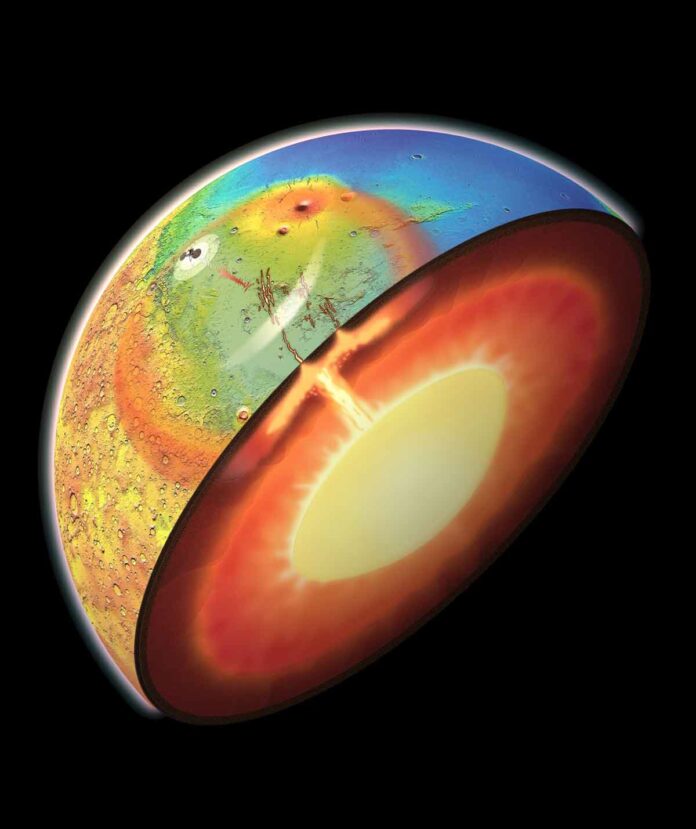Researchers have discovered a driving force behind volcanic activity on Mars. It was previously thought to have no active seismic geology.
Planetary scientists from the University of Arizona’s Lunar and Planetary Laboratory have deduced an active mantle plume. This is the same type of giant pillar of hot molten rock that drives volcanic activity and earthquakes on Earth by pushing hot magma from the mantle closer to the surface crust.
The plume has a diameter of about 4,000 kilometres and is located beneath Mars’ northern plains. The plume is located in the Elysium Planitia region. It can explain the area’s volcanic and seismic activity. This is according to a study published today in Nature Astronomy.
Although there is plenty of evidence of volcanic activity on Mars’ surface. This includes the largest volcano in the solar system, Olympus Mons. The majority of this activity occurred about 4 billion years ago over a 500-million-year period.
NASA announced plans in 2015 to build a probe that would reveal more about geological activity on Earth’s proximal sidekick. In 2018, the $810 million InSight lander touched down. It was carrying a thermal “mole” called HP3. It “will hammer five metres into the Martian subsurface… to learn how much heat is coming from Mars’ interior and reveal the planet’s thermal history.”
Adrien Broquet, postdoctoral research associate, and associate professor Jeffrey Andrews-Hanna discovered strong evidence for ongoing geological activity. Broquet analysed the resulting data and combining it with other sources such as gamma-ray spectrometer data from NASA’s Mars Odyssey spacecraft.
Cerberus Fossae is where Insight landed. It was discovered to be sitting over a mantle plume of hot material that was 95-285 Kelvin warmer than its surroundings. The presence of an active plume drives local sustained geological activity. It includes the marsquakes detected by InSight. It is also the cause of the Cerberus Fossae’s slow crustal opening.
According to the researchers, Mars is only the third body in the inner Solar System, after Earth and Venus, to have active mantle plumes.

